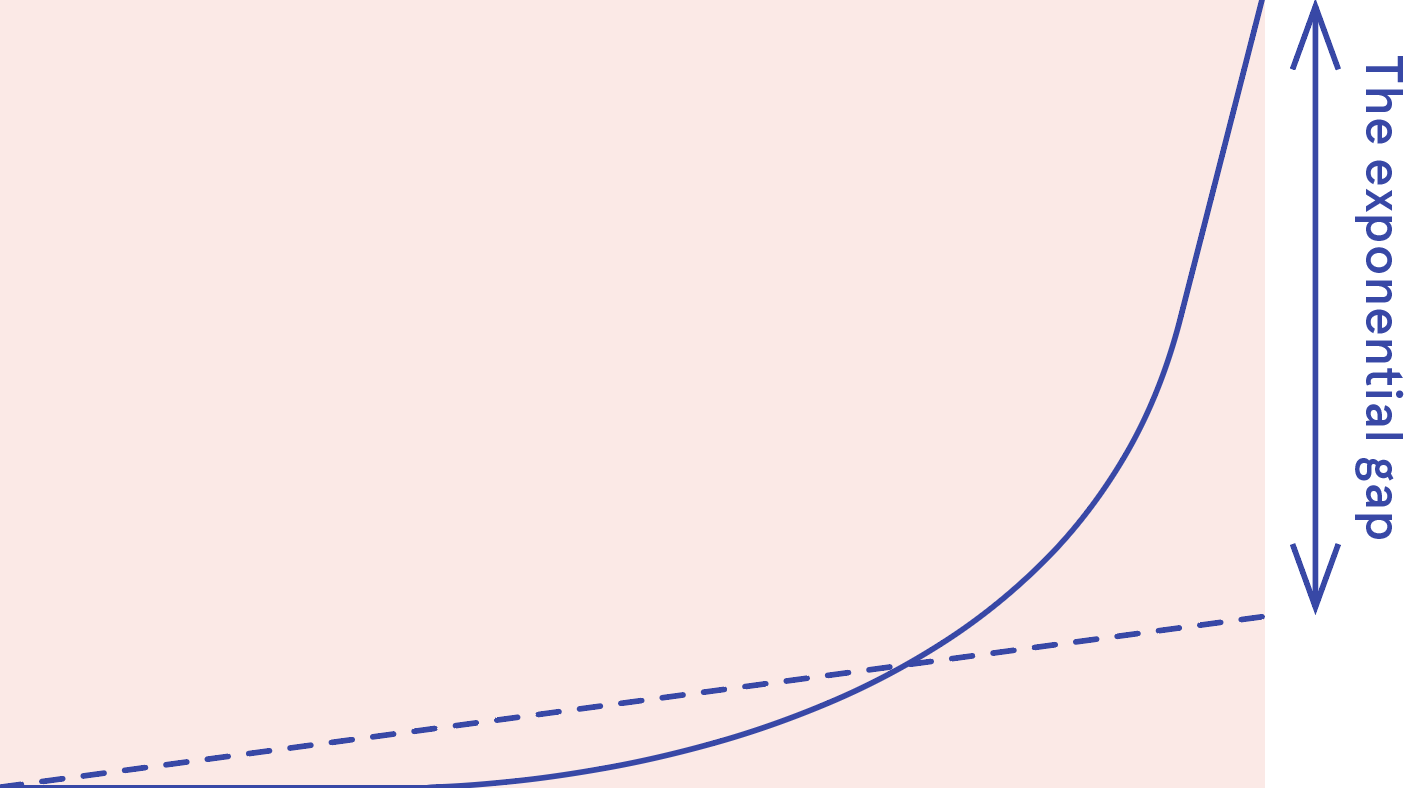|
Yes, I am an avid reader of Wired UK; I like to read their magazines because often they introduce novel topics which help to broaden my view of the world. In one of the last editions, an article was talking about the exponential gap - and I was hooked. We all heard about exponential growth; and most of us have difficulties to grasp the reality of it. Take the story of Lord Krishna who took a chessboard and asked to fill each square with the double amount of rice. Once you reach the 64th square, there is so much rice on the chessboard that it would fill India with a 75 cm layer of rice. Exponential growth is inconceivable. This is what Hans Rosling also mentions in his book Factfulness; he calls this the third mega misconception - the Straight Line Instinct. Let's look at the graph below showing a general picture comparing linear and exponential growth. The linear line is steady; with each unit of investment you get a specific return. The exponential line instead stays below the linear line for a very long time; it almost appears not to move up. Then suddenly, the line shoots up and is going past the linear line. What does that mean for us? The first observation I made, is that while on a piece of paper these line are crossing, there is no way to switch from the linear path to the exponential path. Imagine you are cycling on a highway and you are going fast. Suddenly a sports car is rushing past and continuous to accelerate. That's how this crossing feels like!
Allow me to explain how this exponential gap is relevant for your business. What can you learn from this graph for your success? The first topic is about innovation. We often work in a linear model. That means we are collecting the specifications for a new product or service and then develop a new solution. You are developing one product at a time; the focus is the product and the result is more revenue based on these new products. The product development happens in a controlled way. With an exponential mindset, we focus on a deep understanding of the needs of our customers. We will start with one aspect and experiment to create value. With each iteration we strengthen the relationship with our customers; we are able to reach broader aspects where we can deliver valuable services to our customers. And with the insights we are able to address new markets. When we start to look beyond the products and focus on the bigger picture, we are building a structure that supports innovation. This will remove the limitation of growth and exponential return is possible. The second topic is about leadership capabilities. In many companies we observe a learning & development approach that focuses on the number of people that are going through training interventions. This linear approaches takes a fixed number of people through workshops and expects a small percentage of these people being able to improve their leadership style - that's a fixed number per year. What does exponential mean for developing leadership qualities? We take the approach to focus on a small number of people and work together with them over a period of 3-6 months with the aim that they fully understand and adopt the new skills. As a result, they will spread their changed leadership behaviour to the groups they are interacting with. They become advocates and ambassadors for the new leadership capabilities. Then with additional support of online self-learning, a much larger group of people will be able to improve their people skills. Why is the exponential gap so tricky? And what are the important ingredients for exponential growth?
Where do you see the opportunity to break free of a linear path? Sources:
0 Comments
Leave a Reply. |
Subscribe
Receive our monthly themed summaries of our thoughts: click! TimTim is a change practitioner in the area of innovation and excellence. He is working with teams to accelerate innovation, collaboration and agility. Categories
All
Archives
July 2024
|



 RSS Feed
RSS Feed